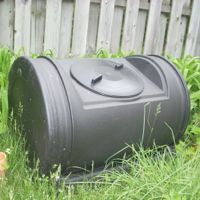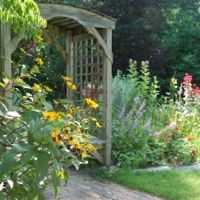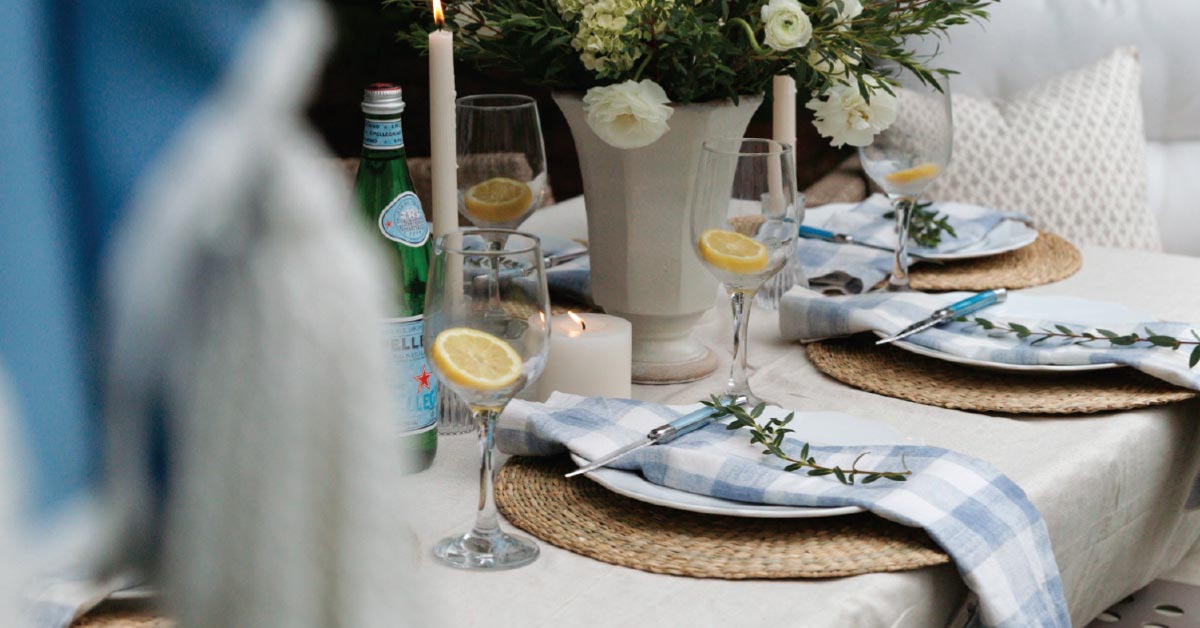Some purchase and cultivate compost bins in their gardens, others designate a space for an open pile of vegetable ends and grass clippings. Whatever the method, the process can be rewarding for plants and the general environment surrounding the house.
Kathie Kalinowski and her husband have been composting for years. They have an area surrounded by chicken wire in their yard where they discard unneeded leaves, grass clippings and kitchen scraps–uneeded until it's time to enrich their expansive garden (pictured left). Using the nutrient rich soil created in the compost pile gives their flowers the materials they need to bloom healthy and strong.
"We use the compost to enhance the soil in our perennial gardens and our small vegetable garden. Eventually, we will use most of the compost in a planned larger raised bed vegetable garden. The soil on the bottom of the compost pile is very dark and rich, full of nutrients that help plants thrive and retain moisture," Kathie says.
Mari Kermit-Canfield started composting this year. She purchased a small compost bin in which she places similar materials to Kathie, in addition to an activator that came with the bin.
 "I hate throwing away perfectly usable waste, and we need nutrients for our garden anyway," she says.
"I hate throwing away perfectly usable waste, and we need nutrients for our garden anyway," she says.
Mari is learning to perfect the balance between "green" and "brown" materials needed in the "microbial process" of the compost pile. She also adds egg shells to the mix to increase the calcium levels. However, Mari does not compost dairy or meat products to avoid attracting "vermin" to the yard.
"A healthy compost pile is made up of equal parts of nitrogen rich green plant material and brown plant material plus oxygen, moisture, and consistent internal temperature. This balance should result in a earthy smelling -- not funky, rotten, stinky -- pile and will provide a thriving environment for the fungi and bacteria, as well as insects like red wiggler worms that will convert the plant material into friable, nutrient rich compost that can be reintegrated into your gardening efforts," says Lisa Rose Starner.
Compost bins like Mari's (pictured right) can be purchased at Tree Huggers and Flowerland. Kathie purchased a compost crock to keep in the kitchen for scraps from Gardener's Supply Company.
The ideal time to start composting is in the fall or winter months, Mari says, to build up a stock of the nutrient-rich materials. Then in the spring, it will be ready to mix into the garden's soil and spread over the top.
Compost bins and piles are not permitted within the Grand Rapids City Limits.
Written by: Erika Fifelski is the West Michigan Woman magazine editorial coordinator. She was born and raised in West Michigan, and after a brief stint on the sunrise side, she's home and loving it. Erika enjoys cooking, vacuuming, and discovering new ways to live sustainably and support local businesses.




